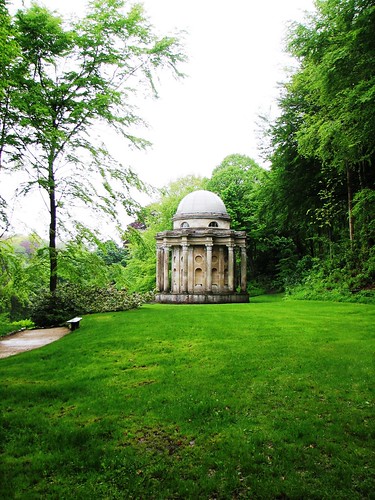We studied paintings, sculptures, architecture, and the lives of the more famous artists. But it gets a tad more comprehensive. We also studied religion, culture, history, politics, and law. Depending on what portraits, sculpture or art work you were writing your paper on- you might have to know about medieval castle bathrooms, sexual relations of Marie di Medici, papal legislation, Spanish shipbuilding and navigation, business accounts of Ming China, murders (which occur frequently in the art world actually), chemistry and compositions of elements (da Vinci's last supper), aerodynamics (again, da Vinci) and warfare.
I have quite the well-rounded education actually. And I'm about to awe you with something I learned in my 17th and 18th Century Art class. Gardens.
That's right...I learned about gardens. There are types of gardens, with rules and regulations about what and how things get planted. And on the off chance you or I are at a garden party where the host actually has a particular type of garden, I'll be able to tell you "darling, this is a French garden".
The gardens we studied in depth in that class were French, Italian, and English. There are also Persian, American and Japanese. There's also Greek and Chinese, Dutch and Spanish. There are a lot really. There's also historical gardens (which you might have heard of-Hanging Gardens of Babylon anyone?) from the Byzantine or Mughals or Romans. HGTV has a whole show of garden design called The Outdoor Room that features Jamie Durie, who is a landscape artist.
I realize not everyone is as big of a nerd as I am, so I'll keep this blissfully short and to the point.
Here's the big three from class and I suppose one day maybe I'll show the rest.
English Gardens
During the time period we studied, English gardens were going through this phase where they were artistically designed to be as natural (but contained) as possible. Lakes and rolling hills and classic ruins were a must. I promise you that you've seen these quite a bit, even if you're not a garden lover.
For example, there's Stourhead Garden. The garden is part of the English National Trust (which means if you happen to go to England, you can also go there). Here's the Temple of Apollo and the bridge.
And this is why I know you've seen it. It features prominently in the movie Pride and Prejudice (2005) when Darcy proposes to Lizzy.
 |
| Via |
French Gardens
There are quite a few French styles. The one from the class is called a jardin à la française or a French formal garden. The most prominent example is Versailles's gardens. French gardens (of this sort) have enclosed plant beds. There are a lot of geometric patters and maintained shrubbery (topiary). There's always a path. Basically everything is orderly. Very, very orderly.
 |
| Via |
If by chance you're interested in other french types of gardens, there's a landscape garden (also at Versailles), which is a more casual (yes still highly orderly) garden. Marie Antionette's hamlets and the Petit Trianon showcase that style.
Italian Garden (the Renaissance Garden)
These gardens influenced the French and the English. There are fountains, literary themes (specifically from classical literature), and secret gardens within gardens. They tend not to be as strict as the French but not as casual as the English.
The Villa d'Este (near Tivoli and Rome) was created by a Cardinal (who was a Borgia btw...of these Borgias) and it's a lovely example.
 |
| Via |
 |
| Via |
That's it! Short and sweet...now you know all about gardens.










No comments:
Post a Comment